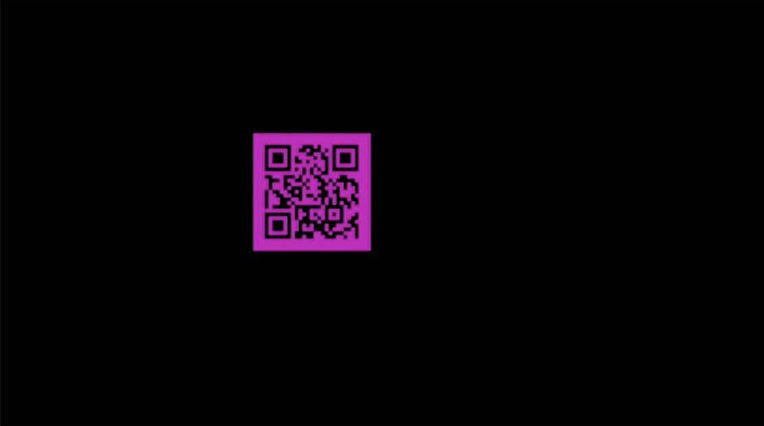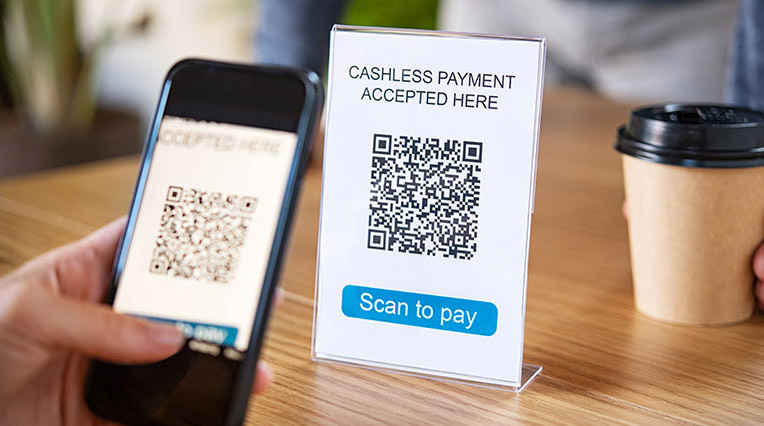You see them everywhere – on billboards, on packaging, in gyms, restaurants and now even Superbowl ads. QR codes have become a staple for companies trying to relay a lot of information in a small amount of pixel space. Those little white and black square barcodes have been around since the early 1990s but had never really found cultural prominence – until today.
So why are QR codes such a valuable marketing tool now, and where have they been hiding all this time?
What is a QR Code?
The QR code (meaning “quick response”) was invented in 1994 by Masahiro Hara, who was part of the Japanese company Denso Wave (at the time a subsidiary of the Toyota car company). Hara needed a system similar to bar codes, but that could store more data. So he created a square grid with a series of pixels that could be read in two directions — top to bottom and right to left — unlike standard barcodes that can only be read in one direction. The QR code’s original purpose was to track vehicles during manufacturing and allow high-speed automotive part scanning.

Static vs Dynamic
Static QR Codes cannot be modified once they have been created. They are perfect for creating codes in mass quantities that do not expire. However, they lack the ability to add creative customization and may not allow for robust analytics and tracking.
Dynamic QR codes allow you to change the code as many times as needed. When scanned, it directs the user to a URL and can track and measure statistics. Dynamic QR codes also allow the creator to customize the design, including adding different colors. They expire once the free trial period is over if created with a free generator, but can usually be prolonged with a purchased plan.
Why did the QR code initially fail?
QR codes in the format we know them today didn’t become widespread until the early 2000s with the invention of the smartphone. However, the technology wasn’t widely adopted by consumers due to the lack of technology to quickly read them. Early QR codes were also often associated with suspicious, fraudulent websites or phishing scams.
In the early 2000s, websites usually weren’t mobile-optimized so QR codes would often redirect people to websites that were hard to view on a phone. This could have caused users to doubt the legitimacy and safety of the digital information. Also, most early smartphones did not have native scanners built-in. Consumers were obligated to download a QR code reader app before they could scan a QR code.
Because of its inefficiency, security risks and overly complex usage in the consumer market, QR codes began to fade into obscurity during the early 2010s.
The Rebirth of the QR Code?
As mobile devices improved and reader technology advanced in the mid-2010s, QR codes started being used in more dynamic and diverse ways. Their ability to store and share a lot of information has become a huge benefit in this new era of contactless communication brought on by the Covid-19 pandemic. With worldwide disruptions came the resurgence of the QR code. In a world where “touchless” is mandated to protect consumer health, the QR code finally had a real purpose.

Updates to Android and iOS devices also changed QR code scanning. Now the ability to scan QR codes using your mobile device’s camera is natively built-in, so users don’t have to download a separate app. The most recent updates now also include QR code detection, making it even easier to scan QR codes wherever you take your phone. Besides being a mobile-first technology that minimizes contact and aligns with safety measures, we’ve witnessed QR codes picking up relevance as a unique marketing tool. The rise of social media also heavily influenced the QR code’s popularity, with Snapchat and Facebook Messenger integrating QR codes into their systems in 2016. Companies use QR codes as a digital means to connect to their consumers on social platforms where time and space are valuable. Younger consumers are now accustomed to engaging with QR codes to access additional information or promotional codes.

Past security concerns have been addressed, too. Today’s QR code designs can come with brand protection, anti-forgery measures, and traceability – all meant to improve the QR code experience. Generators now have features such as custom domain, single sign-on (SSO) and password protection.
Businesses and consumers are now more familiar with QR codes, how they work and their simplicity, making them more popular than ever.
QR Code benefits
- Can store a large amount of data – QR codes have gone beyond just linking to a website. They can link to images, multimedia files and videos, as well as augmented reality (AR) and virtual reality (VR). A QR Code can also be used for industry verticals – mobile marketing, product packaging and contact tracing. Their flexibility makes them a perfect advertising tool for digital and print.
- Scanability – Anyone with a smartphone today can scan a QR code. They can be easily scanned from far distances, making them a useful marketing tool for advertising in crowded areas. Even at 30% damage to a QR code it can still be read correctly by a scanner.
- Easy to create – All you need is a trusted QR code generator. No additional technological know-how is required!
- Highly Customizable – Today, a QR code can be customized with colors beyond black and white pixels. And QR codes can now also go beyond the square – with options for circle shapes or logos.
- Track Performance – with Dynamic QR codes, you can track your campaign performance and get access to data that can be integrated with Google Analytics.
Should you be using QR Codes?


Any tool, if used incorrectly, can be deemed useless. The QR code was written off as “dead” early on due to the lack of technology at the time and its gimmicky misuse. But during the pandemic, QR codes found their purpose as a crucial tool within and outside of the marketing space. As a result, multiple industries have adopted modern day QR code technology. They’re now in more places than ever – from movie tickets to contactless mobile payments to restaurant menus. And QR code usage is anticipated to grow over the next couple of years.

When asked to explain the purpose the QR code, Masahiro Hara said “The QR code is to connect people and information.” Nothing could be truer. Whether for a print campaign or digital outreach, a QR code can be a simple and beneficial part of your upcoming marketing strategy. Contact us to let Ridge Marketing help you use a QR code in your next outreach campaign.
Create Your Own QR Code:
- Beaconstac QR CodeGenerator – offers an easy-to-use free static QR generator with a paid plan for enterprise/business options
- QR Code Generator – Easy to use with simple navigation and clear directions with more advanced customization with a free trial; dynamic QR codes require a paid plan
- QR Code Monkey – free to use (has recently been acquired by the same company that owns QR Code Generator)
- Scanova – requires an account to download your static QR code but is great for one-off campaigns
- Shopify – useful if you already have a website built on a Shopify account, cannot do much customization but good in a pinch

